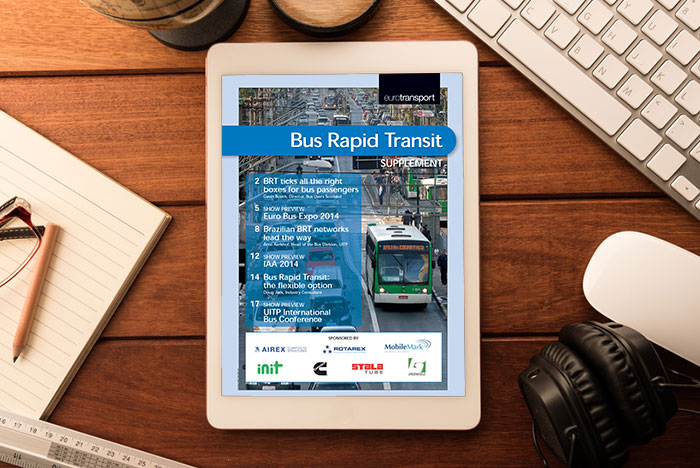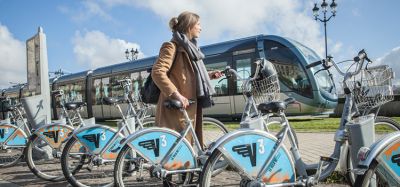Bus Rapid Transit supplement
- Like
- Digg
- Del
- Tumblr
- VKontakte
- Buffer
- Love This
- Odnoklassniki
- Meneame
- Blogger
- Amazon
- Yahoo Mail
- Gmail
- AOL
- Newsvine
- HackerNews
- Evernote
- MySpace
- Mail.ru
- Viadeo
- Line
- Comments
- Yummly
- SMS
- Viber
- Telegram
- Subscribe
- Skype
- Facebook Messenger
- Kakao
- LiveJournal
- Yammer
- Edgar
- Fintel
- Mix
- Instapaper
- Copy Link
Posted: 20 August 2014 | Intelligent Transport | No comments yet
In our latest free-to-view Bus Rapid Transit supplement, Gavin Booth from Bus Users Scotland takes a look at what passengers expect from BRT networks, Arno Kerkhof from the UITP explores the success of Brazilian BRT systems, and Industry Consultant Doug Jack highlights why he thinks BRT is the flexible option for cities…


- Bus Rapid Transit ticks all the right boxes for bus passengers
Bus Rapid Transit (BRT) ticks all the right boxes for bus passengers. They get faster journeys that avoid many of the congestion hotspots, more predictable journey times, usually newer buses, and, typically, better bus stop information and infrastructure. And the levels of benefit increase in line with the level of BRT that is offered. But that is largely down to cost and how much the funders, local authorities in the main, sometimes with government support, can afford to spend, writes Gavin Booth – Director of Bus Users Scotland. - Brazilian Bus Rapid Transit networks lead the way
Fortunately the theme of urban mobility has gained increasing prominence in discussions at all levels. For the International Association of Public Transport, UITP, knowledge management and studies related to Bus Rapid Transit (BRT) systems has always been addressed as the main item of a positive agenda. UITP support for BRT schemes is justified because it is a mass transport alternative suitable to cities of all sizes, notably for its low-cost and shorter implementation time compared to other modes. For Intelligent Transport, Arno Kerkhof – Head of the UITP Bus Division – provides an overview of BRT developments in Brazil with Rio as a particular focus. - Bus Rapid Transit: the flexible option
All expert opinion predicts that an ever greater percentage of the world’s population will be living in urban areas within the next 18-20 years. In China alone, around 10 million people per annum move from the countryside to rapidly-expanding cities, in search of employment. This rapid growth in urban population places heavy demands on public transport, and that pressure is bound to increase, writes Doug Jack, Industry Consultant. Rail systems, both overground and underground, are very expensive to build, but their attraction to passengers is the speed of journey times, compared with using congested roads. A lower cost alternative to rival rail networks, but still capable of moving large numbers of people, is Bus Rapid Transit (BRT) systems.
This Bus Rapid Transit supplement is restricted - login or subscribe for free to access
Thank you for visiting our website. To access this content in full, you'll need to login or subscribe.
It's completely free to subscribe, and in less than a minute you can continue reading. If you've already subscribed, just login.
Why subscribe? Join our growing community of thousands of industry professionals and gain access to:
- Quarterly issues in print and/or digital format
- Case studies, whitepapers, webinars and industry-leading content
- Breaking news and features
- Our extensive online archive of thousands of articles and years of past issues
All for free!
Click here to Subscribe today Login here
Related topics
Infrastructure & Urban Planning, Multimodality
Issue
Issue 4 2014
Related modes
Bus & Coach
Related organisations
Airex Composite Structures, Bus Users Scotland, Cummins, FireDETEC, Groeneveld, INIT, International Association for Public Transport (UITP), Mobile Mark, Stalatube
Related people
Arno Kerkhof, Gavin Booth







